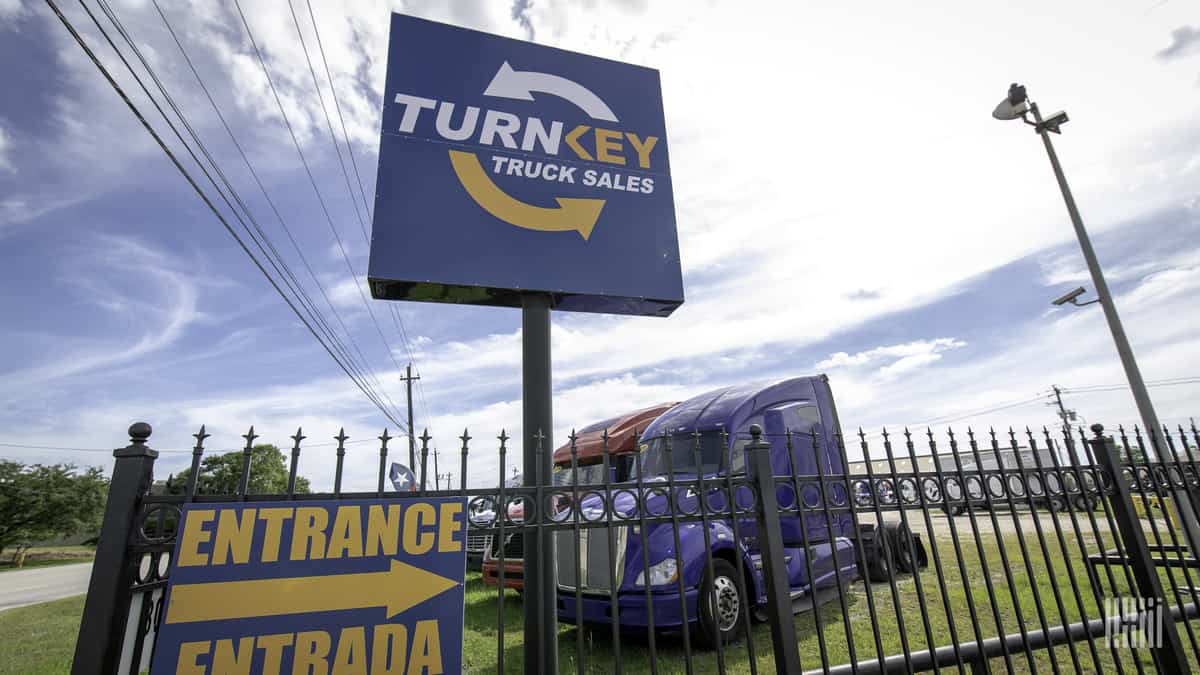The volume of Class 8 used trucks rolling onto the virtual auction block in June rose. Newer, low-mileage trucks increased in value even as large groups of identical sleeper cabs pushed month-over-month prices lower.
One exception: A 2016 model sleeper cab sold for an average $27,313, up 6.9% or $1,768 over May.
“Volume rose substantially in June, and was the highest we’ve seen for our benchmark group since at least late 2015,” said Chris Visser, J.D. Power Valuation Services commercial vehicles senior analyst and product manager. “Freight data for dry van and reefer loads has fully recovered, and other segments continue to improve.
“Month-over-month, our benchmark group of 4- to 6-year-old trucks brought 4.3% less money. In the first six months of 2020, pricing averaged 23.9% lower than the same period of 2019,” Visser said.
Waiting game for older trucks
Large fleets waiting for better prices on older sleeper cabs parlayed June’s business recovery with 8,100 trucking jobs into a decision to swap into newer equipment.
Inventories of new trucks are lower following practically no new trucks being built in April and May. That was due to coronavirus pandemic lockdowns.
“We really didn’t go through the holding out phase like I know some bigger fleets might have been doing, said Eric Samp, used truck director for Girard, Ohio-based AIM Leasing. AIM has three used truck centers among its 50 U.S. locations.
“The Walmarts of the world might have held off moving equipment to an auction waiting for prices to come up,” Samp told FreightWaves. “Sleeper [prices] might be on the rise a little bit but not anything that would justify saying now it’s time to dump them all.”
Used trucks sold better in June
AIM sold about 90 used trucks in June,. That’s 15-20 more than average. The big hitters were sleeper cabs and medium-duty trucks. Lack of interest in day cabs, used in regional haul and drayage, surprised Samp.
AIM is the nation’s third-largest truck rental and leasing company. It gets a steady flow of trucks coming off lease. Most used trucks it receives are sold on site. Only 15% go to auction.
“For us, our customers are back in the saddle,” Samp said. “A lot of them had to bow out of the business temporarily. They are back up and running now, and the fact that the new units just weren’t on the street as much for the last several months helped the used market.”
Fleet Advantage, which provides truck fleet business analytics, equipment financing and lifecycle cost management, said it is guardedly optimistic that June’s improvement is sustainable. It sold more used trucks in June than May but declined to provide specifics.
“We’re starting to see a pickup in demand and seeing better overall pricing,” President Brian Holland told FreightWaves. “We may not be representative of the market because most of our equipment is relatively late-model premium assets. The demand is from high-quality buyers.
“We’re like everyone else, more hopeful than certain. But there does appear to be some improvement.”
Cash for Leaseback success
Separately, Fleet Advantage said Tuesday it swapped cash for equity in 150 older trucks that will eventually convert to new truck leases.
Fleet Advantage’s Sale-Leaseback program allows fleets to sell their equipment equity and keep driving the trucks on a lease of 12 to 36 months. At lease end, the fleet agrees to lease a new truck and participate in a lifecycle management program. It tracks fuel economy and maintenance costs for a lower total cost of ownership.
A large international distributor that provides food packaging, disposable supplies, and cleaning and safety products, and a large regional convenience store chain with retail stores signed on for the leaseback program. Fleet Advantage did not identify either customer.
For the fleets, the immediate benefit is getting cash for trucks they are not using or under using. For Fleet Advantage, the lease-back locks up future business.
“These two companies rely on a supply chain that faces challenges stemming from the COVID-19 pandemic,” said John Flynn, CEO of Fleet Advantage. “We have infused cash into their businesses at a cost lower than their credit facility and provide reduced, fixed costs that improve their bottom line.”
Click for more FreightWaves articles by Alan Adler.
Related stories:
Used truck prices firm but demand still slack
Crisis Cash: Leasebacks could help struggling fleets stay solvent











